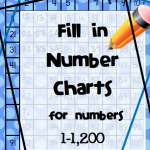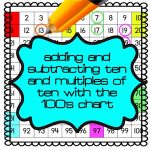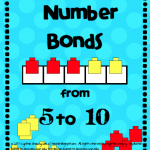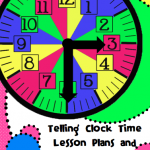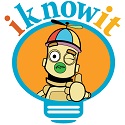Happy New Year 2026 Drawing Starts
I always love to give kids drawing starts and see what the imagination can create. Here are some 2026 number drawing starts for you completely free for download! (If you aren’t familiar with drawing starts, students add lines to the figures and make a new picture. They can use all of the numbers to make a picture or make all of the numbers into one picture.)


Happy New Year 2026!
Happy New Year 2026 from Teacherblog.co!

Ready to Listen: Necessity the Mother of Invention
Since I teach push in classes for 30-45 minutes to all primary classes, I tried this trick one day, and it worked. We have had a crop of especially unruly kindergarten students this year. I can only reiterate the expectations and take points from multiple children so many times before needing another solution. This day I showed my posters of “Ready Freddy” which normally work to redirect students, but this day the posters didn’t work as well as they needed to for silence. With the posters I said, ” I will count everyone who is sitting the right way on the carpet.” When I got to a student who wasn’t sitting the right way on the carpet, I would go back to counting at one. It went something like this. I would point to a student doing the right thing and say, “one”. Then I would follow with “two, three, four.” Each time I saw a student sitting correctly, I would continue counting. When a student stopped following directions, I would stop counting. I would continue in this fashion until I could count the whole class one by one. When I arrived at 20, for example, I would lead the while class in a silent cheer (scream) where students act like they are yelling and waving their hands in the air yet it would be silent. I found counting students who were behaving would calm the class. I hope this works for you!
Need a Lesson for Any Holiday?
Are you in a pinch for a holiday lesson…ANY TIME of the year? Do this! This turned out better than I thought and into an amazing critical thinking activity!
STEP 1. Brainstorm a list of holidays as a whole group. Take any holiday the children tell you and write them on the board/ELMO etc. I even had a child tell me Veterans Day. After which ensued a discussion about what Veterans Day is about. Surprisingly to me, I discovered that Veterans Day is about being thankful to veterinarians. 😀 After we cleared that up, we started on the next step.
STEP 2: Pick two holidays you would like to squish (combine) into a new, original, holiday. I used the example of Christmas + Thanksgiving in one class because I knew children would gravitate to holidays that were close to November and December on the calendar. I emphasized being original after I used Thanksgiving and Christmas as the examples..
STEP 3: Think of three details about each of your squished holidays. For example, what type of activities would people do for a celebration? What type of songs would be sung? What type of decorations would there be? What type of foods would be eaten? I have children list at least three details for each of their created holidays. I asked students to create three squished holidays.
STEP 4: Draw a picture of your favorite squished holiday. Children want to do this anyway while they are thinking of the holiday.
STEP 5: Have children show their work on the Elmo or do a gallery walk. They will be proud of their newly created holiday!


What You Must Know When Building Spiders with Children
I have repeated these spider lessons multiple years with different sets of children. This year I have had an epiphany! Most years I have handicapped spiders, spiders with missing legs, spiders with too many eyes, children who make the abdomen too small etc. This year I started with the legs. I modeled how to fold the legs first. Fold it down, flip it over, fold it down, flip it over, fold it down, and flip it over. I gave the children two legs to start with. This lets them have something to do to keep busy. Then I pass out more as they are working. Next, I pass out a large piece of construction paper and draw a small circle on the back to show them the wrong way to cut a spider body (abdomen). Then I show them the right way. I tell students to attach the legs to the spider when they have them all cut out. Doing it this way this year gave me a much higher rate of children with spiders that were accurately built with legs and body. Next week is my last spider lesson, so we will see how the finished products turn out!
To read more about the spider lessons go here.
Amazing Spider Web Builder!
One evening, I got a gift! I had been teaching about spiders like I have several times before and THEN…THIS…right on my front porch! I got a front row seat to a spider web creation. Now I get to share it with the sweet children I teach. I was more in awe of the spider constructing such an amazing sight right in front of me. It was almost like fireworks but a work of God’s magnificent creation. Enjoy it with me.
What to Do about Know-it-Alls
I teacher gifted learners at the moment and an advanced math group. When you teach these type of kids, there is a fine line between sharing what you know and vomiting information. I share this with students before it gets to the point of vomiting information. Not only is it a nice proverb speak, it is a tiny bit of history since Theodore Roosevelt shared it. I tell my students that people don’t care how much you know until they know how much you care. I introduce this in a type of circle time, they I can refer to it if I notice children becoming know-it-alls or gravitating towards arrogance. You are welcome to the sign also. I am sharing it with you here.

Are the Electricity Police Coming After You?
I have been having a sensitivity to fluorescent lights with my eyes. Not only that, but the green light isn’t pleasing for appearances. I had bought two cute lamps at Good Will for $6.99 each. Then I had a recent visit by the electricity police (the people the school district sends around with clipboards). 🙁 They wanted to make sure I had taken my Christmas lights down (which I had). However, someone was getting rid of their LED lights which I had hung up. The electricity police said that the LED lights were okay. I had them hung up but rarely turned them on because honestly they were underwhelming and not worth the trouble. Next, I decided to invest in some light covers because I thought they would help take the green glare out of the room. They did an okay job. Honestly, they help but are not show stoppers! See the difference. I hung them up today. I’m going to buy more lamps at Good Will. I got the covers from Amazon.





